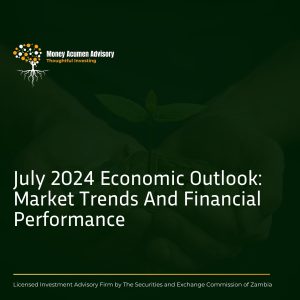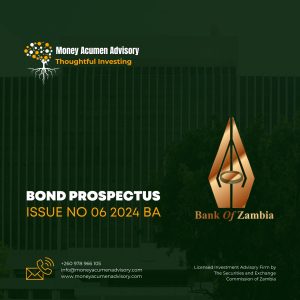Overall Performance
Zambia’s macroeconomic environment in 2024 reflected a mixture of challenges and opportunities. The country’s GDP was projected to reach $30.56 billion, with a growth rate of 2.3%, down from 3% in 2023. This decline accentuated the strain on the economy from external and internal factors, including a prolonged drought that adversely impacted key sectors such as agriculture and energy. Agriculture, a cornerstone of Zambia’s economy, suffered reduced yields, while energy production, particularly hydropower, was curtailed by low water levels. Despite these setbacks, the mining and services sectors displayed resilience, helping to cushion the overall economic slowdown. However, copper mining, a critical driver of Zambia’s export revenue, and growth in retail, telecommunications, and financial services mitigated some of the negative impacts of the drought.
Inflation Trend
Inflation, another significant concern for Zambia, sharply rose over the past two years. In 2023, inflation increased from 9.4% in January to 13.1% in December. This trend continued into 2024, with inflation peaking at 16.7% in December. The primary drivers of this inflationary pressure include global fuel price hikes, the depreciation of the Kwacha, and the impact of the drought, which had increased reliance on costly imports for staples and electricity. These inflationary trends completely devasted household purchasing power, straining both businesses and consumers.
Fiscal Policy
The Bank of Zambia responded with aggressive monetary policy measures to stabilize the economy. The Statutory Reserve Ratio (SRR), a tool to tighten liquidity, was progressively increased from 9% in 2023 to 26% by early 2024, the highest in recent history. This measure aimed to curb inflation by reducing the money supply, but it also restricted access to credit, raised borrowing costs, and slowed economic activity. Similarly, the Monetary Policy Rate (MPR) was raised incrementally, reaching 14% by late 2024. While these interventions highlight the government’s commitment to macroeconomic stability, they have had trade- offs, including reduced disposable income for households and constrained business investments.
Banking Sector
Interest rates on fixed deposits varied significantly in 2024, reflecting banks’ differing strategies to attract and retain deposits amid tightening liquidity. While some banks offered competitive rates of up to 17% for long-term deposits, others took a more conservative approach, offering lower rates. These dynamics underscored the cautious investment climate and the growing preference for safe, long-term savings amid economic uncertainty.
Microfinance institutions (MFIs) have played an increasingly important role in bridging the credit gap left by traditional banks. Offering quick, no-collateral loans, MFIs have supported small businesses and low-income individuals, driving entrepreneurship and economic activity. However, the high-interest rates charged by MFIs pose risks of debt traps, potentially destabilizing household finances. Meanwhile, the rise of mobile money platforms revolutionized financial inclusion, with over 58% of Zambian adults by the end of 2024 using these services. While this digital transformation improved access to financial services, it also raised concerns about cybersecurity and fraud, highlighting the need for robust safeguards.
Conclusion
Looking ahead, Zambia’s economic outlook for 2025 is cautiously optimistic. While 2024 had been a challenging year, the Bank of Zambia and the African Development Bank anticipate a recovery beginning in 2025. GDP growth is projected to rebound to 5.7%, driven by recovery in the mining and agriculture sectors and stabilization of energy production. These developments provide hope for addressing the structural challenges that hindered Zambia’s economic progress and lay a foundation for sustainable growth.




